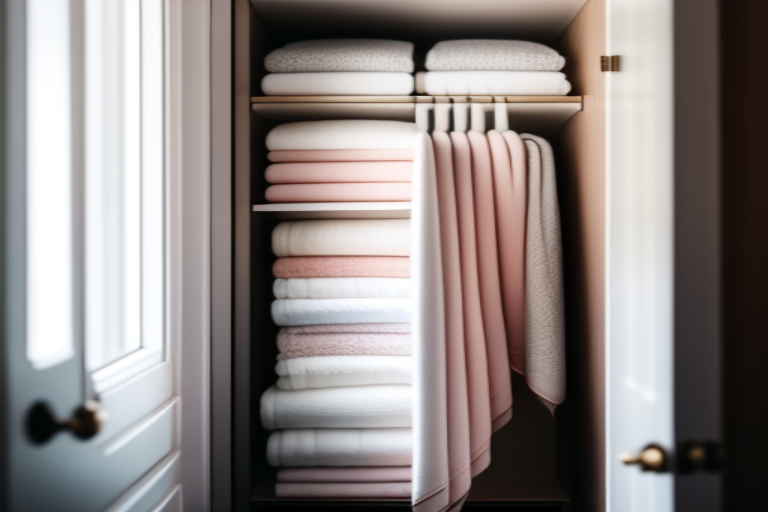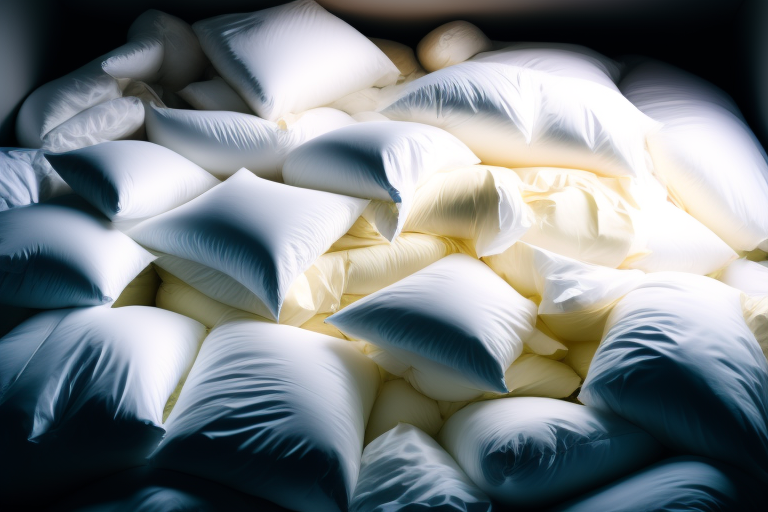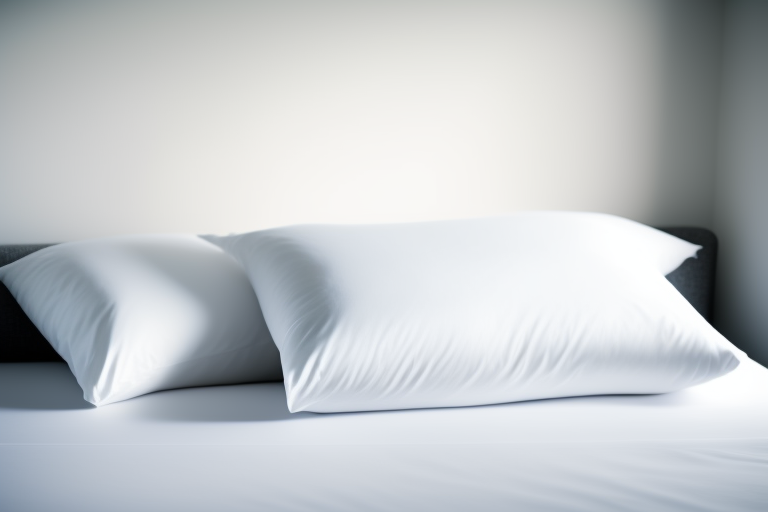Top sheets have long been a staple of traditional bedding, providing an extra layer between sleepers and comforters. But over the past decade, the humble top sheet has been slowly vanishing from bedrooms and bedding sets.
So why are top sheets becoming obsolete? The declining popularity of top sheets reflects shifting bedding preferences, particularly among millennials. As younger generations opt for alternative bedding like duvets, and place more emphasis on simplicity and hassle-free bedding, the extra layer of a top sheet has come to be seen as an unnecessary nuisance by many.
A Brief History of Top Sheets
- Top sheets have their origins as simple bed coverings predating blankets and quilts
- They were widely utilized in the 18th and 19th centuries before central heating when extra layers helped keep sleepers warm
- Top sheets paired with flat sheets on mattresses became standard bedding in the early 20th century
- Having layers of sheets was considered proper sleeping hygiene and part of everyday bed-making routines
- Top sheets were a bedding staple through the late 20th century
For much of their history, top sheets were an essential part of standard bedding and everyday bed-making routines. Making a bed “properly” meant including a fitted sheet, flat sheet, top sheet, and blanket or comforter.
The Decline of the Top Sheet
In the 21st century, the usage of top sheets has steadily declined year over year:
- 2005 – 83% of consumers reported using a top sheet
- 2015 – 68% reported using a top sheet
- 2022 – Only 50% report regularly using top sheets
Reasons for the decline in popularity of top sheets:
- The rise of alternatives – Duvets, down comforters, quilts have emerged as preferred top layers
- Simpler bedding – Layering top sheets seen as nuisance, younger consumers prefer simplicity
- Changing aesthetics – The “crumpled” look of top sheets doesn’t align with modern minimalist bedding style
- Warmer homes – Better insulation and climate control makes the extra layer unnecessary
- Hygiene concerns – Top sheets can trap body sweat and oils unlike duvets with removable covers
Millennials in particular have been driving the abandonment of top sheets in favor of more streamlined bedding.
Bedding Alternatives Replacing Top Sheets
As top sheets fall out of favor, alternatives have taken their place as the top layer:
Duvet Inserts and Covers
- A duvet is a fabric shell filled with down, feathers or a down alternative like polyester batting
- Duvet covers allow changing the look of bedding by swapping out covers
- Easy to take duvet covers off for washing compared to top sheets
Down and Down-Alternative Comforters
- Similar to duvets but comforters don’t require a cover
- Provide warmth without the hassle of layering a top sheet
- Available in lightweight versions perfect for summer
Quilts and Bedspreads
- Quilts provide a decorative, cozy alternative to flat top sheets
- Like duvets and comforters, quilts don’t require layering with sheets
- Work year-round from lightweight cotton in summer to wool or flannel in winter
These alternatives have several advantages over flat top sheets when it comes to warmth, comfort, and hassle-free bed-making. The emergence of bedding options that don’t require top sheets has been a major factor in their diminishing popularity.

Millennials and Bedding Trends
As with so many consumer goods from skinny jeans to side parts, Millennials have been trendsetters in the shift away from top sheets.
Some key reasons this generation uses top sheets less than Baby Boomers or Gen X:
- Desire for streamlined, simplified bedding
- Dislike messy aesthetic and hassle of layering sheets
- Embrace cozier alternatives like duvets and quilts
- Prioritize convenience and ease in domestic tasks
- Appreciate versatile bedding like lightweight duvets
Additionally, the more casual approach to bed-making and matching sheets among Millennials has reduced the perceived need for layers. The generation that popularized bed-in-a-box brands like Casper is seeking convenience over properly made beds with top sheets.
Are Top Sheets Unhygienic?
One of the criticisms of top sheets is that they can be unhygienic. The idea is that the layer traps sweat, skin cells and oils against the sleeper’s body rather than letting them pass through to a duvet or comforter more easily washed.
But how much more hygienic are duvets versus top sheets?
- Duvet covers should be washed every 2-4 weeks just like top sheets for hygiene
- Duvet inserts only need washing 1-2 times per year
- More breathable natural fiber sheets like linen allow sweat to pass through
- Regular washing and sanitizing sheets kills germs regardless of layers
When it comes to cleanliness, there doesn’t seem to be strong evidence that top sheets are significantly worse than duvets. As with any bedding, regular washing is key for both types.
The Anti-Top Sheet Movement
The abandonment of top sheets has inspired a minor cultural movement – the anti-top sheet movement. This loose coalition of consumers, designers and bloggers generally believe:
- Top sheets are outdated and a nuisance
- Layering sheets goes against trending minimalist aesthetics
- They disrupt rest by twisting and tangling during the night
- Fitted sheets and duvet covers are simpler and smoother
While mostly found on design blogs and forums, the anti-top sheet movement reflects just how strongly some consumers feel against this once ubiquitous bedding staple.
The Rise of Fitted Sheets
As one layer – the top sheet – has faded, another has become essential – the fitted sheet. The fitted bottom sheet has risen in popularity over the past few decades.
Today, fitted sheets are a must for any well-dressed bed. Reasons for their popularity:
- Provide smooth look by clinging to mattress
- Stay tucked in securely and won’t slide around
- Allow use of mattress pads and toppers
- Compatible with deeper mattresses like pillow tops
- Eliminate need to hospital-tuck bottom flat sheets
Fitted sheets help create a tidy, upscale look layered under top duvets or comforters. Their rise has coincided with the top sheet’s decline.

How Often Should You Change Sheets?
With or without a top sheet, another factor is how frequently bedding should be changed for hygiene. Here are general guidelines on changing frequency:
- Sheets – every 1-2 weeks
- Pillowcases – every 1-2 weeks
- Duvet covers – every 2-4 weeks
- Blankets/Quilts – every 3-6 months
- Duvet inserts – every 6 months to 1 year
Proper laundry techniques also help kill germs and mites:
- Wash with hot water temperature
- Use bleach or sanitizing detergent
- Wash pillows and heavier items on a sanitize or allergen cycle
- Consider steam sanitizing mattresses
Following these guidelines, using mattress protectors, and regular washing can help keep bedding fresh and hygienic whether using sheets, duvets or both.
Making and Unmaking Beds
Ah, the chore of making the bed. For generations, part of daily bedroom tidying meant properly tucking in the fitted sheet, stretching the flat sheet over the mattress and hospital folding the top sheet.
Has ditching top sheets made bedmaking and unmaking easier?
- Time savings: Eliminating the top sheet saves 1-2 minutes when making and unmaking
- Less untucking: No top sheet means less loosening and untucking at night
- Simpler and smoother: Just fitted sheet and duvet provides a streamlined look
- Easier bed-making: Reduces time and frustration making messy top layers look neat
So while the time savings are minimal, skipping top sheets does remove one step from bedding chores. The simplified bedding layers also tend to stay neater looking overnight.
Lightweight Summer Bedding
A common objection to ditching top sheets is that they can help adjust blankets for warmer weather. Without a top sheet, how can bedding stay cool in summer?
Today’s lightweightduvets and breathable natural fiber sheets provide warm weather bedding alternatives. Options include:
- Lightweight cotton, linen or tencel duvets – These airy natural fiber duvets can replace heavy winter ones. Many are machine-washable.
- Moisture-wicking performance sheets – Synthetic fibers like microfiber pull sweat away from the body and feel cool to the touch.
- 100% cotton sheets – Lightweight percale cotton sheets feel crisp, cool and breathable.
- Bed fans or cooling mattress pads – Technology like fans or gel-infused pads regulate temperature.
With these options, top sheets are no longer required to stay comfortable on hot summer nights.
Top Sheet Alternatives for Children
Parents often wonder if top sheets are still useful for kids. Aren’t they safer than letting children sleep directly under blankets?
There are ways to keep kids warm and safe in bed without flat top sheets:
- Use child-safe duvet covers secured closed rather than loose blankets
- Choose wearable blankets like weighted blankets worn like sleeping bags
- Buy duvet covers 1-2 sizes larger to prevent kicking loose
- Use muslin blankets or swaddles for newborns instead of loose blankets
- Opt for sleep sacks which securely contain baby blankets
These alternatives prevent loose bedding hazards for young children while keeping them cozy.
Environmental Impact
What about the environmental impact of phasing out top sheets? The potential pros and cons:
- Eliminating top sheets means less laundering and water usage
- But flat sheets may have longer lifespans when not used daily
- Opting for natural fabrics like cotton and linen has a lower footprint than synthetics
- Choosing green laundry techniques also reduces environmental impact
The bottom line is regular laundering of any bedding uses energy and water. But ditching top sheets likely has minimal effect on the overall environmental costs of bedding.
Regional and Cultural Differences
While younger generations are moving away from using top sheets in the United States, there are cultural and regional differences in their usage:
- Top sheets remain popular in Europe, especially Germany and Scandinavia
- They are still frequently used in hotels worldwide
- Asian countries like Japan use thinner futon mattresses with top sheets
- Canadians use them less than Americans – only 28% in a recent poll
Habits and bedding norms tend to form based on how we learned to make beds growing up. So the tradition of topping sheets persists in some countries.
The Minimalist Bedding Trend
Part of the appeal of skipping top sheets is that minimalism has influenced bedding aesthetics. The ultra-smooth look of just a fitted sheet and duvet aligns with Instagrammable, clutter-free bedrooms.
Characteristics of the minimalist bedding trend:
- Neutral colors – white, gray, beige
- Simple, pared-down layers
- Only essential pillows and shams
- Crisp edges and hospital corners
- Smooth surfaces unbroken by quilting
- Luxurious natural fabrics like linen
This contrasts with the crumpled, lightly messy look of layered top sheets. Minimalism has helped shift preferences toward seamless, clutter-free bedding.
Final Thoughts
While many grew up dutifully making beds with a top, fitted and flat sheets, the top layer has fallen out of favor with younger generations. Duvets and comforters paired with just a fitted sheet create a simpler, cleaner bedding look aligned with minimalist trends.
But there are alternatives suitable for year-round comfort without top sheets. And skipping them only slightly simplifies bed-making. With better insulation and climate control in homes, top sheets no longer serve an essential purpose.
The days of neatly trifolding and tucking in that extra top layer appear to be coming to an end. But ultimately bedding comes down to personal preference and habits. The vanishing top sheet joins the ranks of other outdated household items as consumers embrace bedding innovations. But for some, giving up the top sheet may remain a slept-in custom hard to break.
Frequently Asked Questions
What are the pros and cons of duvets vs. top sheets?
Duvets provide warmth without the hassle of layering sheets, and duvet covers allow easy washing. But some find top sheets more breathable for summer. Duvets also require purchasing a cover. Overall, duvets provide simplicity and convenience while top sheets offer more traditional bedding layers.
What are alternatives to top sheets for children?
Safe options include duvet covers secured closed instead of loose blankets, wearable blankets like weighted blankets, oversized duvets, muslin baby blankets or swaddles, and sleep sacks. These all prevent loose bedding hazards while keeping children cozy.
Are top sheets more hygienic than duvets?
There’s little evidence that top sheets are significantly more hygienic. Duvet covers and sheets should be washed at the same 1-2 week frequency. Proper, regular laundering is key for health regardless of bedding type.
How can I stay cool in summer without a top sheet?
Use lightweight natural fiber duvets and sheets, moisture-wicking performance sheets, bed fans, or cooling mattress pads instead of heavy layers. Breathable linens and temperature regulating technology provide summer bedding comfort without top sheets.
Does ditching top sheets really save time making beds?
Eliminating the top sheet saves 1-2 minutes per day making and unmaking beds. More importantly, it creates a smoother, simpler layered look that stays tidier at night. So skipping top sheets provides small bedding convenience gains.
What’s the environmental impact of abandoning top sheets?
Washing top sheets uses energy and water. But they may last longer when not used daily. The overall impact of ditching them is likely minimal, especially if opting for eco-friendly laundry practices and natural bedding fabrics.
Are top sheets still commonly used outside the US?
It depends. Top sheets remain popular in Europe but are declining in use in Canada. Asian countries still favor them with thinner futon mattresses. And they are still used frequently in hotels worldwide. Cultural and regional bedding differences affect top sheet practices.








